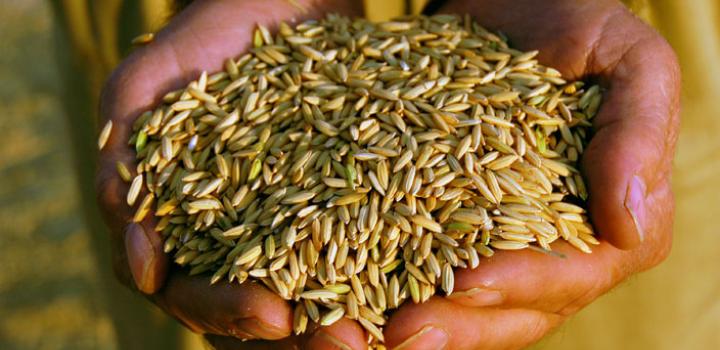Furrow-irrigated rice acres grow in Arkansas
by May 11, 2020 1:12 pm 2,462 views

A rice growing method that was virtually non-existent half a decade ago is being used to grow a significant share of the rice crop in Arkansas. Furrow-irrigated or row rice has been gaining ground, increasing from less than 1% to 10% of total rice acreage in Arkansas in the past five years.
In 2019, 1.1 million acres of rice were harvested in Arkansas, accounting for 46% of total U.S. rice production. Arkansas rice farmers are projected to plant 1.39 million acres this year, according to the United States Department of Agriculture. It generates billion of dollars worth of revenue for the state’s economy and supports directly or indirectly more than 25,000 jobs.
A majority of rice farmers use flood irrigation to water their fields.
Furrow-irrigated rice, also known as row rice or upland rice, has been grown in small pockets of Arkansas for more than 30 years. This method eliminates the need for constant flooding.
Instead, small channels or furrows are dug between the rows and carry water to the crop. Five years ago, this method was used on less than 1 percent of rice acreage in Arkansas. Now, it accounts for a tenth of rice acreage, according to Jarrod Hardke, rice extension agronomist with the University of Arkansas System Division of Agriculture.
“The practice of furrow-irrigated rice continues to surge in adoption,” Hardke said. “In 2012, there were fewer than 5,000 acres in Arkansas, but by 2019 we had well over 100,000 acres. Expectations for 2020 are that we could see 200,000 acres if weather permits planting of all intended acres.”
Similar increases in adoption are occurring in the Missouri Bootheel and northeast Louisiana, Hardke said.
The primary reasons for furrow irrigation are to simplify crop rotations and decrease time and expenses associated with flood-irrigated rice. Additional benefits could include water savings, which will prove more beneficial as water resources are further depleted.
Since rice is a semiaquatic plant, non-flooded rice production research efforts have been limited. Hardke and other researchers began compiling information in 2017 to provide producers with some limited guidance.
A new handbook from the University of Arkansas System Division of Agriculture provides rice growers with the latest research and recommendations for furrow-irrigated rice.
The “Arkansas Furrow-Irrigated Rice Handbook” provides research-based information about selecting cultivars, establishing stands, and managing fertility, weeds, disease, insects and irrigation. It also provides information about budgeting and crop insurance, which became available for furrow-irrigated rice earlier this year through the U.S. Department of Agriculture’s Risk Management Agency.
The publication is available on the Cooperative Extension Service website at this link.
“This year we realized there was a need to expand on that previous information and provide something more robust as acres have continued to increase and research efforts have expanded to answer additional questions,” he said. “As research and adoption continue and we learn more, the handbook will be updated regularly to provide the best possible information to growers.”
